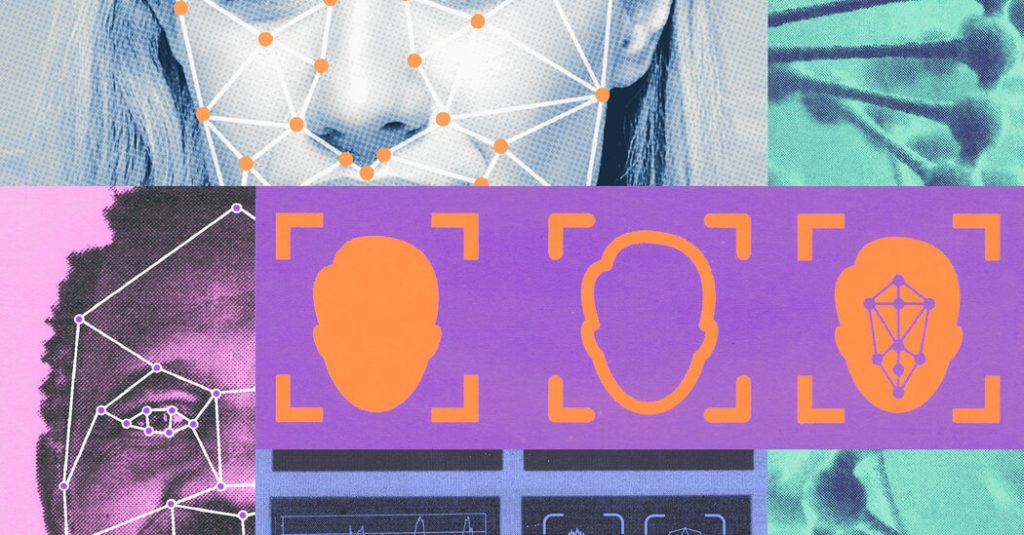It’s no secret that some people appear to age faster than others, especially after enduring stressful periods. But some scientists think a person’s physical appearance could reveal more about them than meets the eye — down to the health of their tissues and cells, a concept known as “biological age.”
In a new study, published Thursday in The Lancet Digital Health, researchers trained artificial intelligence to estimate the biological ages of adults with cancer by analyzing photos of their faces. Study participants with younger estimates tended to fare better after treatment than those deemed older by A.I., researchers at Mass General Brigham found.
The findings suggest that people’s biological age estimates are closely linked to their physical health, which could reflect their ability to survive certain treatments, the authors of the study said. And in the future, facial age analysis may become more useful than age alone in helping doctors make tough calls about their patients’ treatment, they added.
Face-based aging tools have “extraordinary potential” to help doctors quickly and inexpensively estimate how healthy their patients are, compared with existing tests, which use blood or saliva to measure chemical and molecular changes associated with aging, said William Mair, a professor of molecular metabolism at the Harvard T.H. Chan School of Public Health who was not involved in the study. While doctors usually visually estimate how healthy their patients are for their age, a tool like this could draw in much more data to make a better estimate, he added.
FaceAge, the machine learning tool created by researchers at Mass General Brigham, found that study subjects with cancer appeared five years older than their chronological age. The biological age of people without cancer was typically close to their actual age. And those who were categorized as older were more likely to die, either from cancer or other causes.
The researchers are not the first to find a link between facial and biological aging: A study in Denmark found that subjects who looked older than their chronological age tended to die earlier than their twins, and other studies have come to similar conclusions.
FaceAge was trained on a database of more than 56,000 images of people age 60 and older, mostly sourced from Wikipedia and the movie database I.M.D.B. The researchers then asked it to assess the age of study participants, most of whom had cancer, using photographs alone.
Doctors could one day use FaceAge to decide whether to provide different treatment depending on a patient’s estimated biological age, said Dr. Raymond H. Mak, a radiation oncologist at Mass General Brigham who worked on the study.
Toni Feather, a 69-year-old hairdresser and a cancer patient under Dr. Mak’s care, was one of the study participants who looked younger than her chronological age. Mrs. Feather, who lives in Upton, Mass., said Dr. Mak explained that her appearance — which was roughly 10 years younger than her age — could reflect biological resilience, which may have helped her withstand grueling treatments. (Mrs. Feather has undergone several rounds of surgery, chemotherapy and radiation for lung cancer, but she continues to work once a week and regularly cares for her young grandson.)
Preliminary data suggests that FaceAge goes beyond the visual markers of age we might look to, like wrinkles, gray hair or baldness, and instead flags less obvious factors like hollowing of the temples (which reflects a loss of muscle mass) and the prominence of the skin folds on either side of the mouth, Dr. Mak said.
The authors of the study hope to eventually commercialize the technology and create a product that could be used in doctor’s offices. They plan to file for a patent once the technology is more developed.
The current version of the tool has limitations. It was primarily trained on white faces, Dr. Mak said, so it could work differently for people with different skin tones. And it isn’t clear to what extent modifications like plastic surgery, makeup, lighting or the angle of the face could affect the results.
And while biological aging can be accelerated by a number of factors, like stress, pregnancy, smoking, drinking alcohol and even extreme heat, some of these changes can be reversible — and it’s not clear if the tool would pick up those changes over time.
Experts in medical ethics also have concerns.
“I’d be very worried about whether this tool works equally well for all populations, for example women, older adults, racial and ethnic minorities, those with various disabilities, pregnant women and the like,” said Jennifer E. Miller, the co-director of the program for biomedical ethics at Yale University.
She and others in the field also wondered whether the tool might be used to justify denying insurance coverage or medical treatment.
Dr. Mak and other researchers who worked on the study have had reservations, too. “We’re really concerned about potential misuse of technology in general,” he said. However, he added, the researchers felt the tool would be more helpful than harmful — and it could be used to support, but not replace, clinicians’ judgment.
It’s unclear whether FaceAge’s results will be more accurate, more scalable or cheaper than the results from existing tools for estimating biological age, said Daniel Belsky, a Columbia University epidemiologist and associate professor who co-led the development of DunedinPACE, a widely used epigenetic clock.
“There’s a long way between where we are today and actually using these tools in a clinical setting,” Dr. Belsky said.


